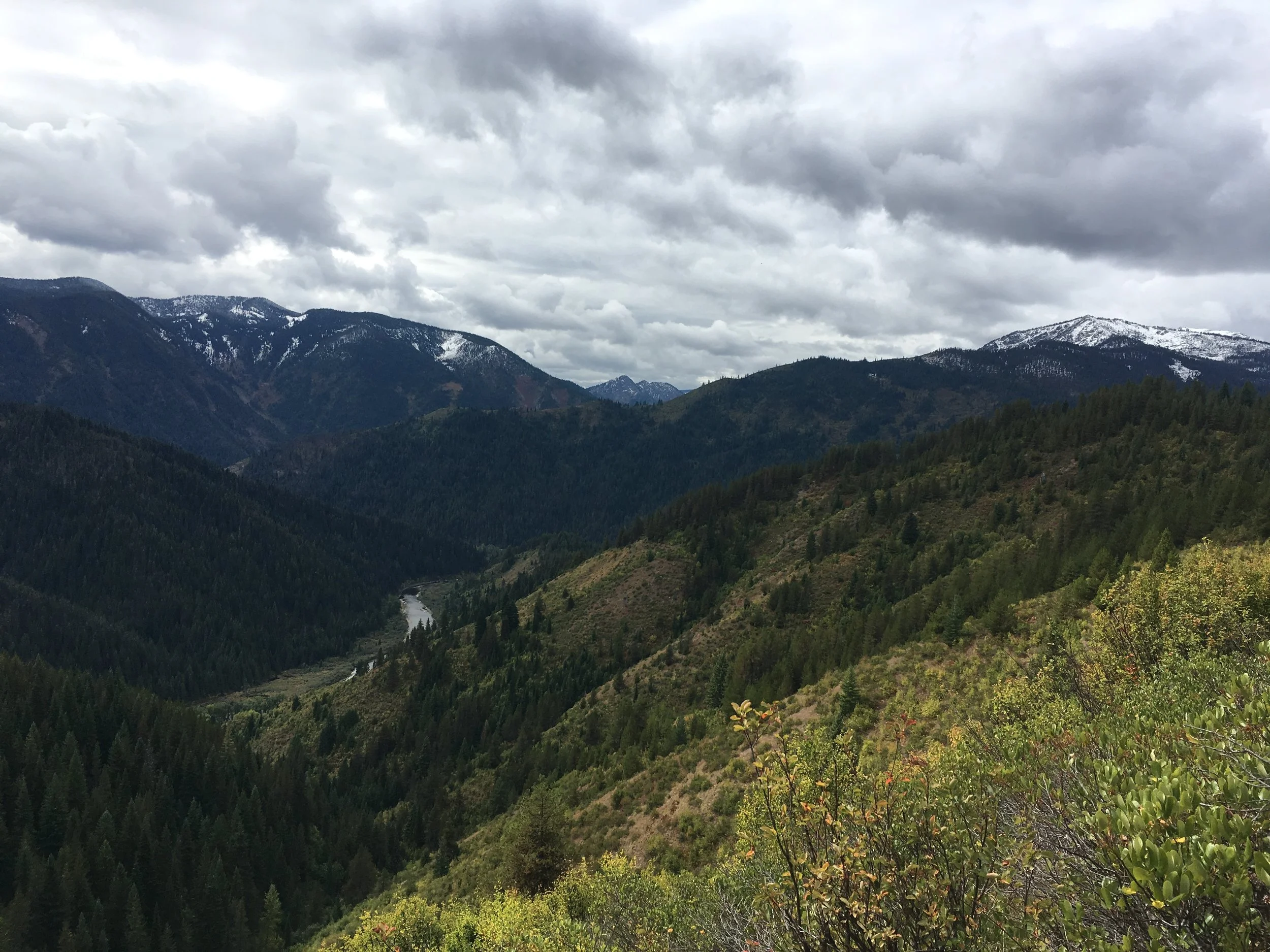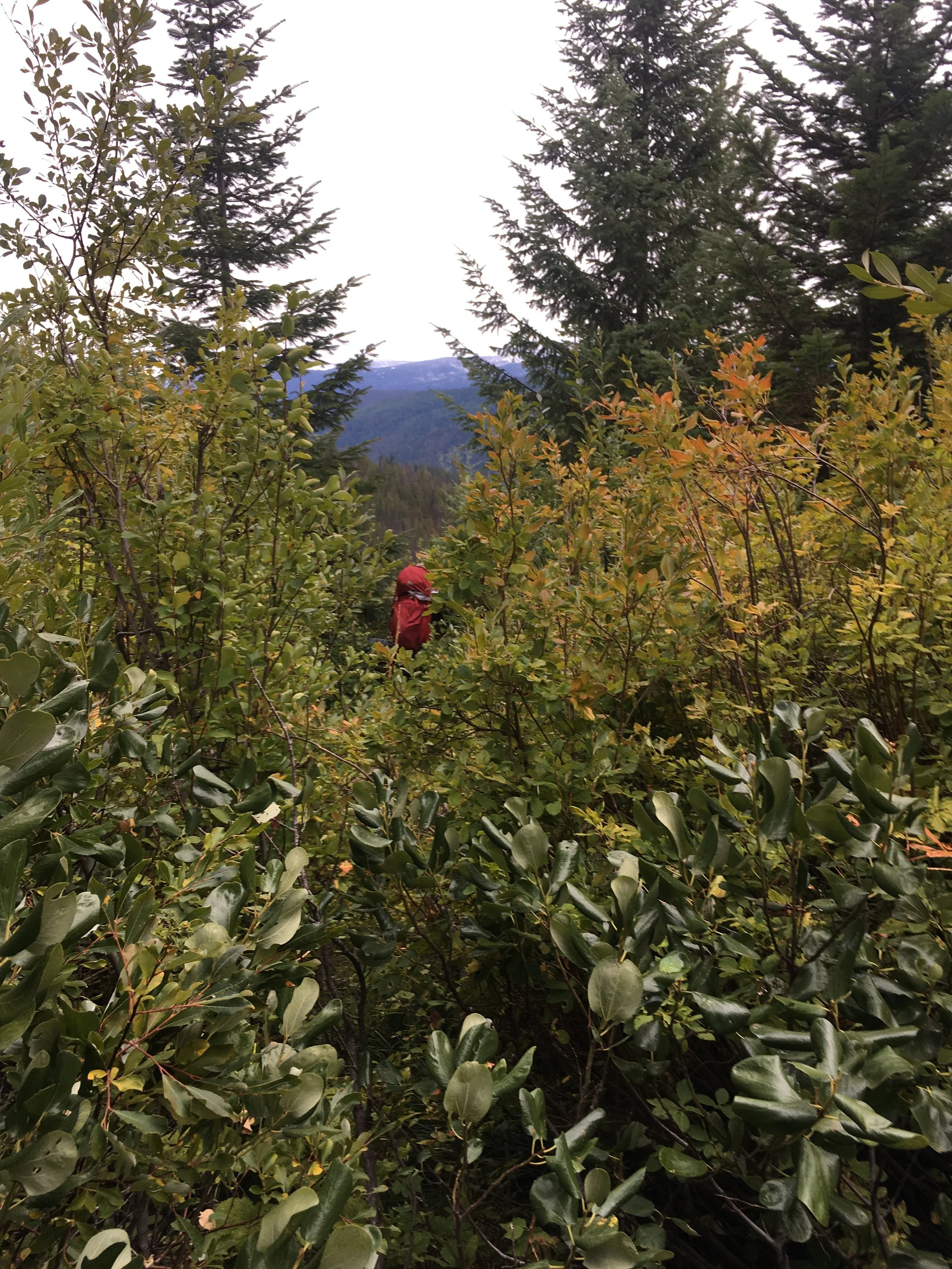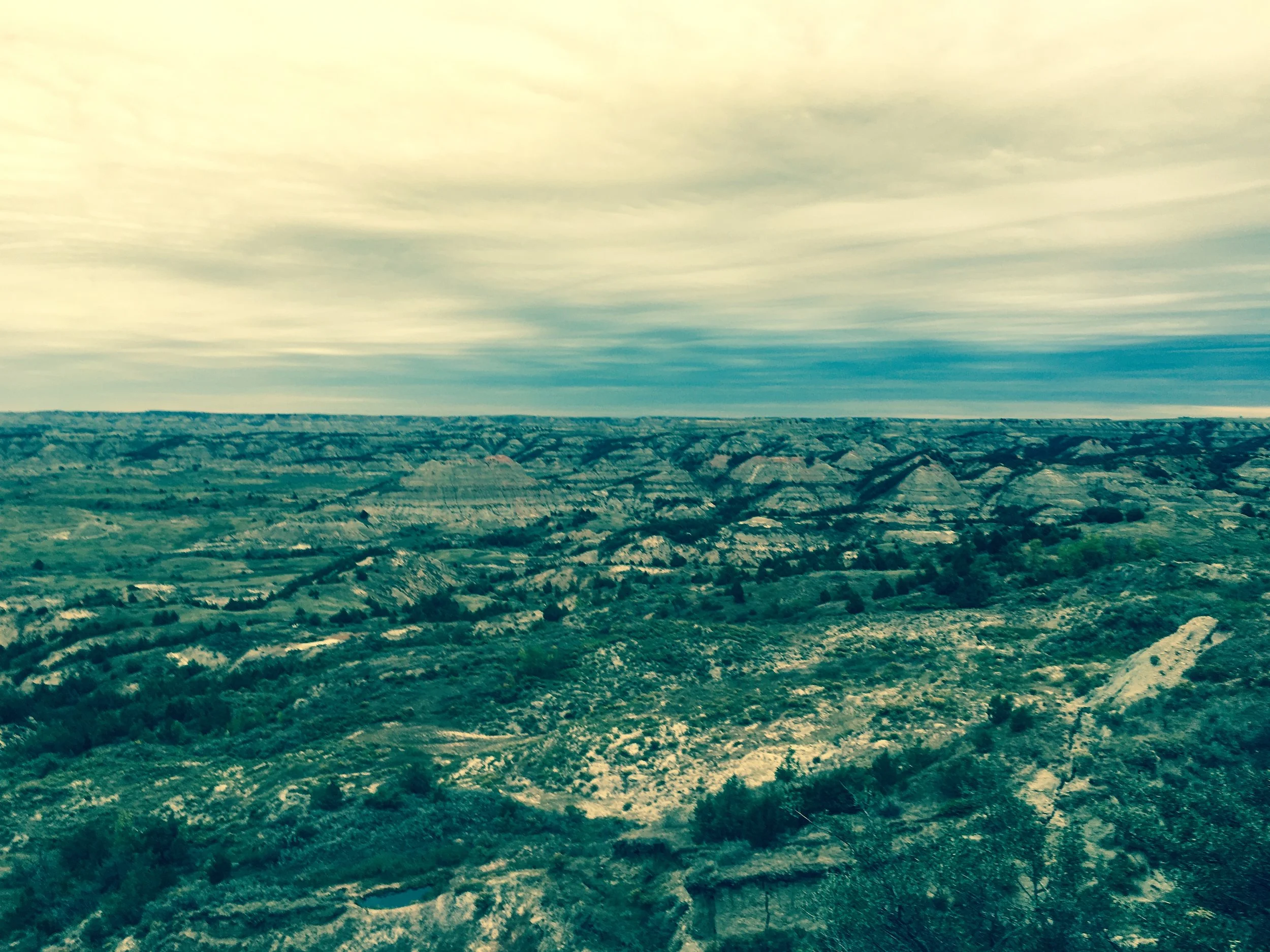Getting There
The destination for day two of the drive was Helena to pick up my hunting partner and then ultimately Missoula that would serve as our final rest stop before heading into the Nez Perce-Clearwater National Forest. The drive through Montana began playing with my sense of season as I would drive through a pass and be sacked in with snow only to find myself surrounded by green pastures ten minutes later. The anticipation was building. I arrived in Helena to help my partner finish packing then we ate a quick warm meal before departing for Missoula.
The only real reason this part of the story is significant is that on our drive to Missoula there were rail tracks following the highway from Helena to Missoula and about midway through I looked over and noticed a bull elk grazing along the tracks. This was the first real bull that I had seen in the wild in well over a decade and the first I had ever seen while I was pursuing the species. My partner missed the sighting so I happily flipped a very questionable u-turn on the highway to drive a few miles back to spot the bull again. The sighting lit something up inside me - this was real.
When we arrived in Missoula we went to a brewery to figure out our plans for the night. Both of us were incredibly antsy by this point so we decided, why not just drive to some public land tonight and car camp? We pulled up a few maps and decided on a location about 45 minutes away. This is the part that I really want to stress to those readers who live East of the Mississippi and don't get to experience vast amounts of public land... we required no permits, no permission and no real parking spot. We found a shoulder off of a gravel road on BLM land, and we parked our cars, threw our sleeping bags in the bed of my partner's pick up and crashed for the night.
The next morning we threw down a massive breakfast on my partner's two burner stove of veggies and eggs and then departed for the trail head. Again on the drive into the forest we had encounters that only hyped us up for the days to come. We spotted numerous white-tailed deer, mule deer and even a moose which ran in front of our vehicles for at least a mile AT OVER 20 MPH. The bull moose looked like it was out for a nice jog. Snow was once again encountered going over the pass, making me a little worried about my gear preparation but ultimately that subsided when we got to the other side of the pass and things cleared up.
We arrived at the trail head about 10 am local time. It's a funny thing once you hit a point like this, because the time on your watch doesn't matter anymore. As soon as you leave your vehicle and the final creature comforts of our lives that are generally shielded from nature everything is driven by the cycle of the sun. The watch that I had on my wrist was only good for setting an alarm to beat the sun up in the morning and for judging the amount of time spent on a certain activity. It's a refreshing feeling, as you begin to realize how much your life is driven by this obsession with what numbers are on a clock face.
For our walk in, I had planned for us to take about a mile of well established trail along a large creek that ran back into the valleys that I had identified with a few potential hunting locations. Once that mile had been chewed up, we turned off of the main trail and took a trail that would go high to the ridge line. I thought it was best to tackle this vertical climb when we had adrenaline driving us. What I didn't realize was how thick and overgrown that climb would be and it ultimately led me to near failure to make it to the ridge line (enjoy photo #4 below of myself nearing collapse on the walk up). Thankfully, I had chosen my hunting partner well. He was an outdoor enthusiast of much more skill and grit than myself. Couple that with a fantastic beard and he's exactly what you want in someone to push you through difficult moments. When it came to the parts where I began falling behind, he was always a few steps ahead and made sure that I wouldn't allow myself to slow down or take too many breaks. Without him, making it to the ridge line would have been even more grueling. Plus, he made sure to let me know it was alright if I threw up as he had done it once before on a change in altitude climb and having that permission somehow made the situation better.
It never seemed like we made it to the ridge line. There was always more climb through thick undergrowth ahead. A recurring theme in my journal was how thick and choked out the area was and how difficult it was to make any appreciable amount of movement. We were constantly fighting alder and just general overgrowth, even when we were on "trails". Photo #5 in photo slide shows the top of my partners head as we were walking through a relatively clear section of "trail". Keep in mind - he is 6'4". I kept noting in my journal that we were clumsy and "had to figure out how to move in these mountains". The first few miles proved rough enough that as soon as we found a small opening with a relatively flat spot, we set up camp for the day. We found a water source just below camp on the North side of the mountain and filled up for the afternoon.
This is where the research up front came in to help immensely. In speaking with the area's biologist, I knew that all along the North facing sides of the hills were small water seeps in open meadow areas. These seeps would provide us with our water throughout the week and as we continued our journey along the ridge line a new seep would get marked on the GPS for future knowledge.
We spent the afternoon fighting thicket and overgrowth. We did wind up bumping some elk mid-afternoon but this was because we were clumsy and loud coming through the undergrowth. Novice hunters indeed. We found a clear overlook where we could glass some hillsides as the sun went down. Glassing is just a term for scouring a piece of land with your binoculars scouting for any animal movement. I have not had many opportunities to hunt in this manner back in Minnesota because on our landscape there are not these large expanses of space to make really hard and thorough glassing worth it.
As tired and beat up as we were, this glassing session was worth every bit of the struggle to make it to where we were sitting. As the sun went down on that first day it poked out between the clouds and mountain tops and absolutely lit up the side of the mountain that we were viewing. Besides its raw beauty, any animal that would have been on those hillsides would have popped out at us. This is a beneficial technique to point out, when glassing always try to keep your back to the sun to help expose the animals and conceal yourself.
There were no animals spotted, and the walk back proved ever more difficult than before as we were tired and it was getting dark. Once again, I was grateful for my partner and his 'let's just get back to camp' mentality that propelled us back home that first evening. His nickname is Sasquatch for a reason. I cannot emphasize enough how difficult this terrain was, and I began realizing why I was the 20th person to buy a tag in this entire area when 420+ were available.
We proved ourselves lazy on the first morning. We allowed the morning sun to wake us before we stirred and began a methodical morning routine of boiling water for oatmeal, coffee and tea and then packing a light bag to take out with us for the day. I think both of us were wondering how any wildlife could even make it in these choked out conditions. It seemed that even morning bird songs and small critters were at a minimum. From the journal, "The density of underbrush and seeming lack of wildlife continues to perplex me."
By the early afternoon we had finally found our first ray of hope. A meadow that was open and not choked out, that had water and plenty of trials and elk sign running through it. We decided to walk back to our original camp, break down and set up at a new location about a quarter of a mile away from this camp so that we could rise early in the morning and hunt this new meadow. Another strange thing that happens when you're out in the wilderness is that you begin to name areas based on their characteristics to you or due to something that happened at that location. I almost wonder if it's some instinct that goes way back, but I feel that it helps tie you to the land and map it better in your mind. I was calling this Hope Meadow, as it was the first positive sign that we had that elk were in the area.
With camp moved, we sat the evening at Hope and then went back to camp. We decided to not be lazy in the morning and set an early alarm. The enthusiasm was back after a long day of fighting underbrush, making calls and hearing nothing in return. Despite these difficulties this land was undeniably beautiful and wild. We were well off of the beaten path and as I went to bed that night I wondered what was to come. If someone would have handed me my journal from three nights into the future and I would have read it that night, I do not think I would have believed the story that was contained within it.
The adventure was just starting.
Kyle Zibrowski










